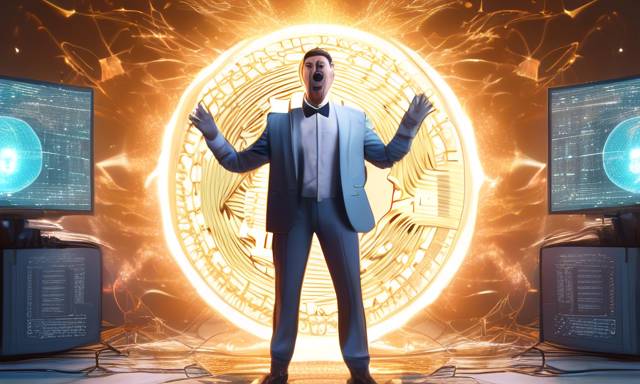Market Dynamics: Ethereum’s Shift in Landscape 🚀
In early October 2024, insights from Matthew Sigel, who leads Digital Assets Research at the worldwide investment firm VanEck, shed light on Ethereum’s recent struggles in the cryptocurrency field. Alongside analysts Patrick Bush and Nathan Frankovitz, Sigel published remarks highlighting Ethereum’s performance relative to Bitcoin (BTC) and Solana (SOL). While Ethereum experienced a 14% increase this year, Bitcoin rose by 49% and Solana surged by 52%. This disparity draws attention to the changes ushered in by the recent implementation of EIP-4844, which has reshaped Ethereum’s economic landscape.
Understanding EIP-4844’s Impact 📉
Sigel provided clarity regarding EIP-4844, a pivotal update rolled out on March 13, 2024. This upgrade established a novel transaction layer for Layer-2 (L2) blockchains, enabling them to manage data at reduced costs. Consequently, this development has lessened the demand for Ethereum’s blockspace. Notably, this demand previously constituted 20% of Ethereum’s blockspace but has significantly dwindled, leading to a decline in Ethereum’s transaction fees.
As a result of these changes, Ethereum’s annual revenue plummeted from $7.2 billion in March to a mere $1.2 billion by September. This financial downturn has flipped the ETH emissions from a deflationary state (-1.15%) to an inflationary one (+0.34%), marking a considerable shift in its previously stable economic model.
Long-term Vision vs. Immediate Challenges 🌐
In exploring Ethereum’s long-term objectives, Sigel noted that the intention behind these adjustments is to broaden blockspace capacity to accommodate mass adoption. This strategic direction echoes Solana’s emphasis on affordable blockspace. However, Sigel pointed out that the confidence of short-term investors in ETH as a deflationary, revenue-generating asset has diminished due to the decreased “take rate.” This situation indicates a significant transformation in Ethereum’s operational model, moving from revenue generation via transaction fees to a function focused on settlement and data availability for its L2s.
The Competitive Landscape: Ethereum vs. Solana ⚔️
Sigel elaborated on the competitive dynamics between blockchains such as Ethereum and Solana, underscoring three critical aspects of competition: the economic value of blockspace, transaction liveness (guaranteeing transactions), and overall safety (ensuring security). He indicated that Ethereum prioritizes liveness and safety, while L2s manage the economic value. Conversely, Solana strives to enhance Layer-1 (L1) economic value, achieving higher transaction throughput and lower latency compared to Ethereum, which often depends on intermediaries like L2s.
Despite the hurdles Ethereum faces, Sigel argued that its attributes of censorship resistance and security offer superior property rights compared to Solana, positioning Ethereum as a more secure and open platform. He suggested that Ethereum developers might reclaim some of its economic value by forging stronger alliances with L2s, perhaps mandating them to hold ETH for transaction sequencing or collateralizing ETH for utilizing Ethereum’s transaction infrastructure.
Valuation Models Under Review 📊
On October 17, 2024, Sigel shared his thoughts on social media platform X regarding Ethereum’s evolving fundamentals. He specified that VanEck’s target of $22,000 for ETH pertains to the year 2030, distinguishing it from their 2024 Election Prediction target. However, he recognized the necessity for an update to their valuation model due to Ethereum’s changing economic fundamentals.
Initially, their model projected a 50:50 distribution of total value locked (TVL) between Ethereum and L2s, as well as a similar split concerning maximum extractable value (MEV), which had been estimated at 0.10% of TVL per annum. While this foundational assumption remains intact, Sigel highlighted discrepancies in the recent transaction revenue distribution. The original expectation had been a 90:10 revenue split favoring Ethereum; however, over the last four months, the actual division has favored L2s by a staggering 10:90 margin.
Hot Take: Navigating Uncertain Waters ⚓
Sigel remarked that this pronounced shift indicates L2s are extracting much more economic value from Ethereum than previously anticipated. Should this 10:90 split persist, it could severely impact VanEck’s price forecast for ETH, potentially reducing it by a third. The ramifications of these dynamics signal a need for Ethereum stakeholders to reassess their strategies and adapt to an evolving cryptocurrency landscape. The focus on aligning Ethereum more closely with L2s and potentially redefining its economic framework could be critical for future growth and stability.





 By
By
 By
By

 By
By
 By
By